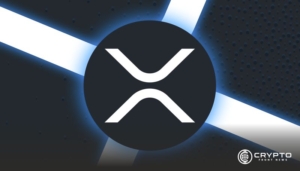- Bitcoin STH-SOPR is lower than 1.0 due to short-term holders within a market selling at a loss, indicating increased market fear and stress among new entrants.
- The 1.0 level provides a powerful resistance level, which tends to lead to reinstated selling in the event of short-term rallies in the midst of weaker trader sentiment.
- Historical data demonstrates that such capitulation periods are likely to be followed by new uptrends in the market, with these being potential first signs of the formation of a Bitcoin bottom.
Bitcoin Short-Term Holder Spent Output Profit Ratio (STH-SOPR) fell to 0.992, the lowest since April, indicating that the market is weak in the short term. This means that those who owned Bitcoin and sold it in the short run do so at a loss and this generally depicts the picture of fear selling.
Short-Term Holders Selling at a Loss
According to on-chain data shared by CryptoQuant.com, the Bitcoin STH-SOPR value currently stands below the critical 1.0 mark. This metric measures the realized profit or loss of investors holding Bitcoin for less than 155 days. When it falls under 1.0, it indicates that holders are selling at a loss.
The current STH-SOPR reading of 0.992 reveals that this group is realizing an average loss of about 0.8%. Such conditions often point to what analysts call “capitulation,” a phase where panic selling dominates. This trend typically emerges after prolonged price corrections, especially when traders seek to minimize further losses.
CryptoOnchain, in a post cited by CryptoQuant, noted that this pattern reflects a strong bearish sentiment among recent buyers. Historically, the 1.0 level has acted as resistance during weak market phases, where price recoveries are often short-lived as traders sell into rallies.
Resistance at the 1.0 Level
The 1.0 threshold in the STH-SOPR metric remains a critical resistance point. As long as both the ratio and its 14-day moving average stay below this mark, the market faces persistent short-term pressure. Investors often use this line as a signal to gauge when the market may shift momentum.
Periods where Bitcoin trades below this ratio usually see reduced confidence among short-term participants. Rallies tend to face selling pressure as traders who bought higher attempt to recover earlier losses. The inability to reclaim this level can suggest that bearish sentiment still dominates.
However, the pattern also provides an early warning of a possible shift. Once Bitcoin sustains a move above this resistance, historical data shows renewed optimism, often marking the start of fresh accumulation by new market participants.
Signs of a Market Bottom Forming
Despite near-term weakness, on-chain data suggests that capitulation among short-term holders can also precede a recovery. Such phases often “cleanse” the market of speculative traders and create conditions for stronger long-term rallies.
Periods of deep loss realization typically mark points of “maximum pain,” where selling exhaustion occurs. This dynamic can set the stage for a potential bottom once selling pressure subsides and accumulation resumes.
According to CryptoQuant.com, a decisive reclaim and sustained hold of the STH-SOPR above the 1.0 level would be necessary to confirm a bullish shift. Until then, the market remains in a rebalancing phase characterized by short-term losses but growing long-term opportunity.





